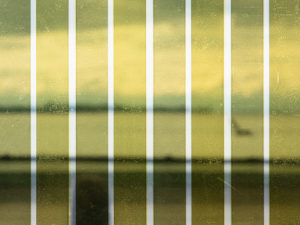An Art Project on the Energy Level of Plants
Fellowship of the ZF Kunststiftung, Friedrichshafen (D), 2019
Exhibition: Zeppelin Museum, Friedrichshafen (D). Oct. 18th 2019 – Dec. 1st 2019

Franz John – Color as Resource
Franz John deals with natural phenomena and with possibilities of representing them in new and old media at the interface between human and machine perception. In many of his site-specific art projects, the Berlin-based artist deals with the historical, geological or climatic peculiarities of a specific region.
Between February and December 2019, he was a fellow of the ZF Kunststiftung Friedrichshafen (Germany), and, during his art residency there, continued to work on his project Color as Resource. At points of exchange among art, science and sustainability, he produced dye-sensitized solar cells(1) from hops plants, a native culture plant of the Lake Constance region, which he used as energy sources for his own artistic light installations.
For his final exhibition at the Zeppelin Museum Friedrichshafen, he placed five regional hops plants grown to ceiling height at the center of a light installation, which he operated exclusively using energy generated and collected from hop dye-operated cells. As a result – not only on a symbolic, but also on a factual level – an autosuggestive, sustainable energy balance of color as a resource can be sensually experienced. In Franz John’s works, this happens avoiding idealizations or romanticizations of nature that are often encountered in ecological art. Perhaps the strongest concession to symbolic or ideal spatial concepts,  albeit from a historical perspective, is represented by the artist’s decision to distribute the hop plants in the exhibition space in accordance with the transculturally known „Quincunx” scheme(2). Text by Clemens Krümmel
albeit from a historical perspective, is represented by the artist’s decision to distribute the hop plants in the exhibition space in accordance with the transculturally known „Quincunx” scheme(2). Text by Clemens Krümmel







